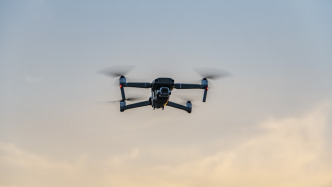
The full moon as seen by NASA's Lunar Reconnaissance Orbiter. Credit: NASA Goddard
In the next 10 years, lunar exploration will be revived. While exploring the moon, various countries plan to establish permanent bases on the moon. However, this will face many challenges, one of which is how to determine the lunar time.
The moon does not have an independent time system, and the time scales of the current lunar exploration missions are different, but they all adopt the Coordinated Universal Time.
Coordinated Universal Time, also known as Universal Time, is the standard set by clocks on Earth. But this method is relatively imprecise, and the time between the lunar probes is not synchronized. This timing method is only effective in independent lunar missions. If there are multiple spacecraft working together, how to unify the time scale becomes a problem. If humans become "residents" of the moon in the future, as they do on Earth, it will be necessary to use a universal lunar time.
Additionally, precise timing signals are required if space agencies are to track these spacecraft using satellite navigation.
Cheryl Gramling, an aerospace engineer who leads the Positioning, Navigation and Timing team at NASA's Goddard Space Center, says they're just starting to tackle this problem.
The gravitational fields of the earth and the moon are different, and the clocks on them naturally run at different speeds. Official lunar time can be based on a clock system synchronized with Coordinated Universal Time, or it can be independent of Earth time. Scientists don't yet know what form universal lunar time should take.
According to "Nature", in November 2022, representatives of space agencies and academic organizations around the world gathered at the European Space Research and Technology Center of the European Space Agency (ESA) to begin drafting proposals on how to define lunar time.
Patrizia Tavella, head of the time department at the International Bureau of Weights and Measures, believes that an official lunar time must be decided soon, or space agencies and private companies will work out their own solutions.
However, defining lunar time is not straightforward. The definition of a second is the same everywhere, but in special relativity, the stronger the gravitational field, the slower the clock goes. It is known that the gravitational force of the moon is smaller than that of the earth, so for observers on the earth, the lunar clock runs faster than the earth's clock.
Gramling estimates that the lunar clock increases by about 56 microseconds every 24 hours. According to Tavella, the clock changes subtly at different positions on the moon due to the moon's rotation.
Currently, there are two methods of formulating lunar time. The first is to set at least 3 main clocks running at the natural speed of the moon, and combine algorithms to generate a more accurate lunar virtual clock. Metrologists then need to make choices, such as whether to link the virtual lunar clock to UTC so that lunar time and UTC are periodically synchronized. This will facilitate interactions between lunar users and Earth users.
The second method is to establish an independent lunar continuous time through the lunar atomic clock, and track and analyze its relationship with the Coordinated Universal Time. That way, even if contact with Earth is lost, the clocks on the Moon will still align and continue to run, allowing safe navigation and communication channels to be established. Additionally, establishing an independent time model would also help space agencies target farther planets, such as Mars, where transit through UTC is far more complex than on the moon. (Original title "What time is it above the moon? Scientists try to establish lunar time")





Comments